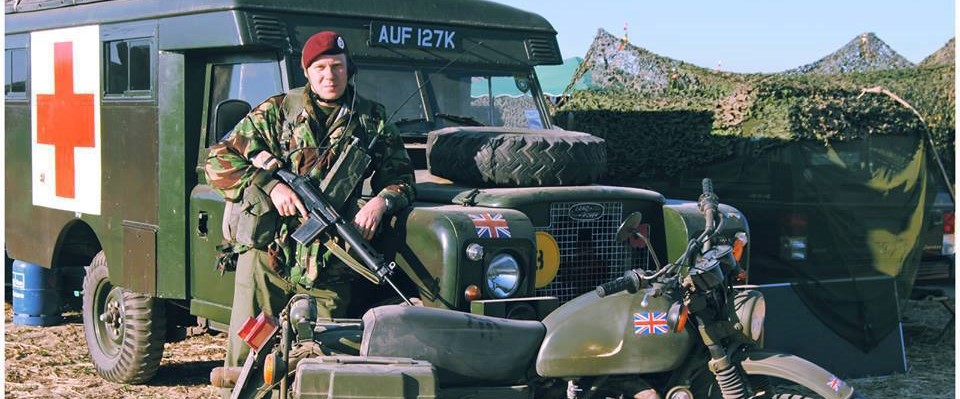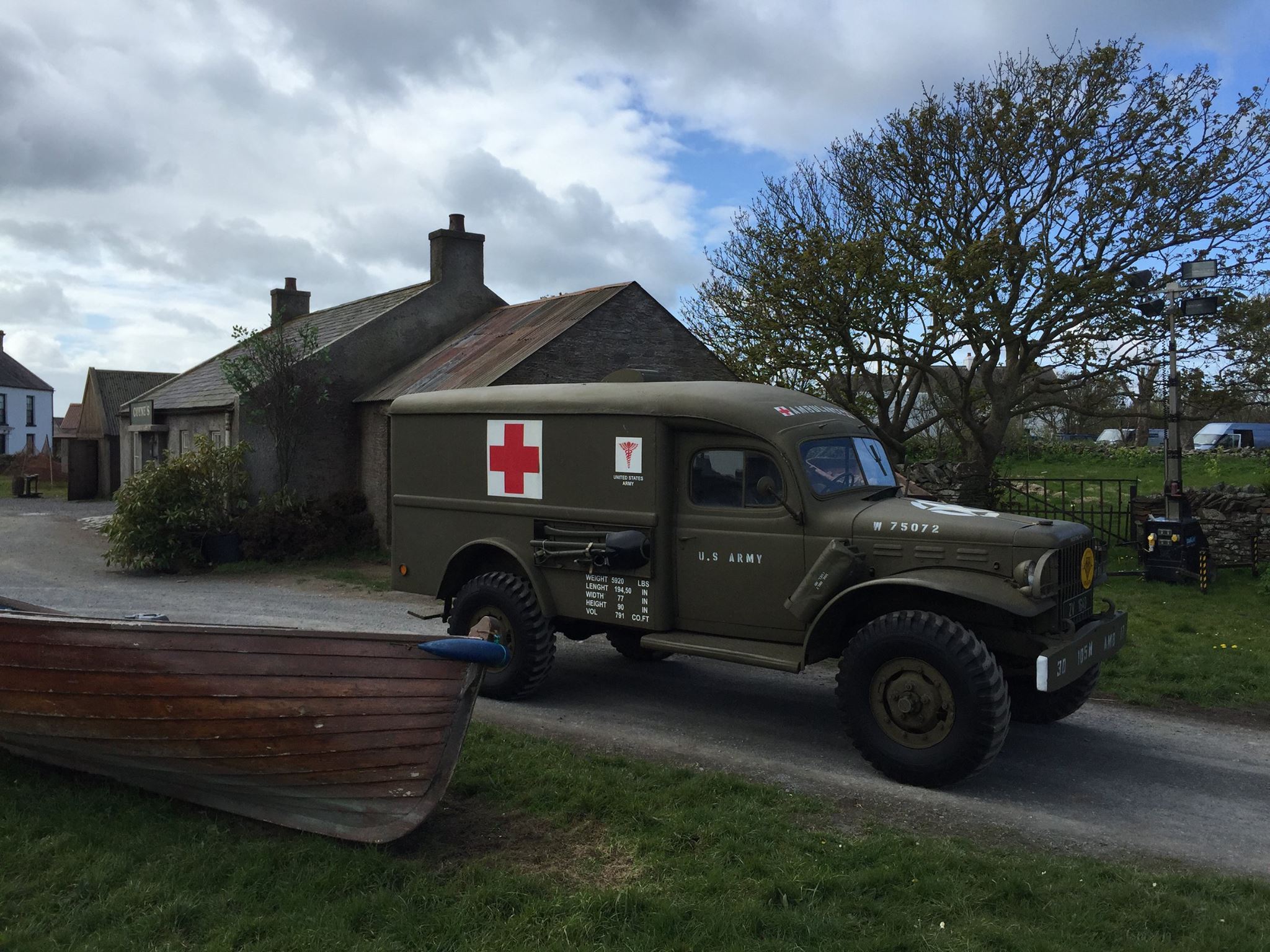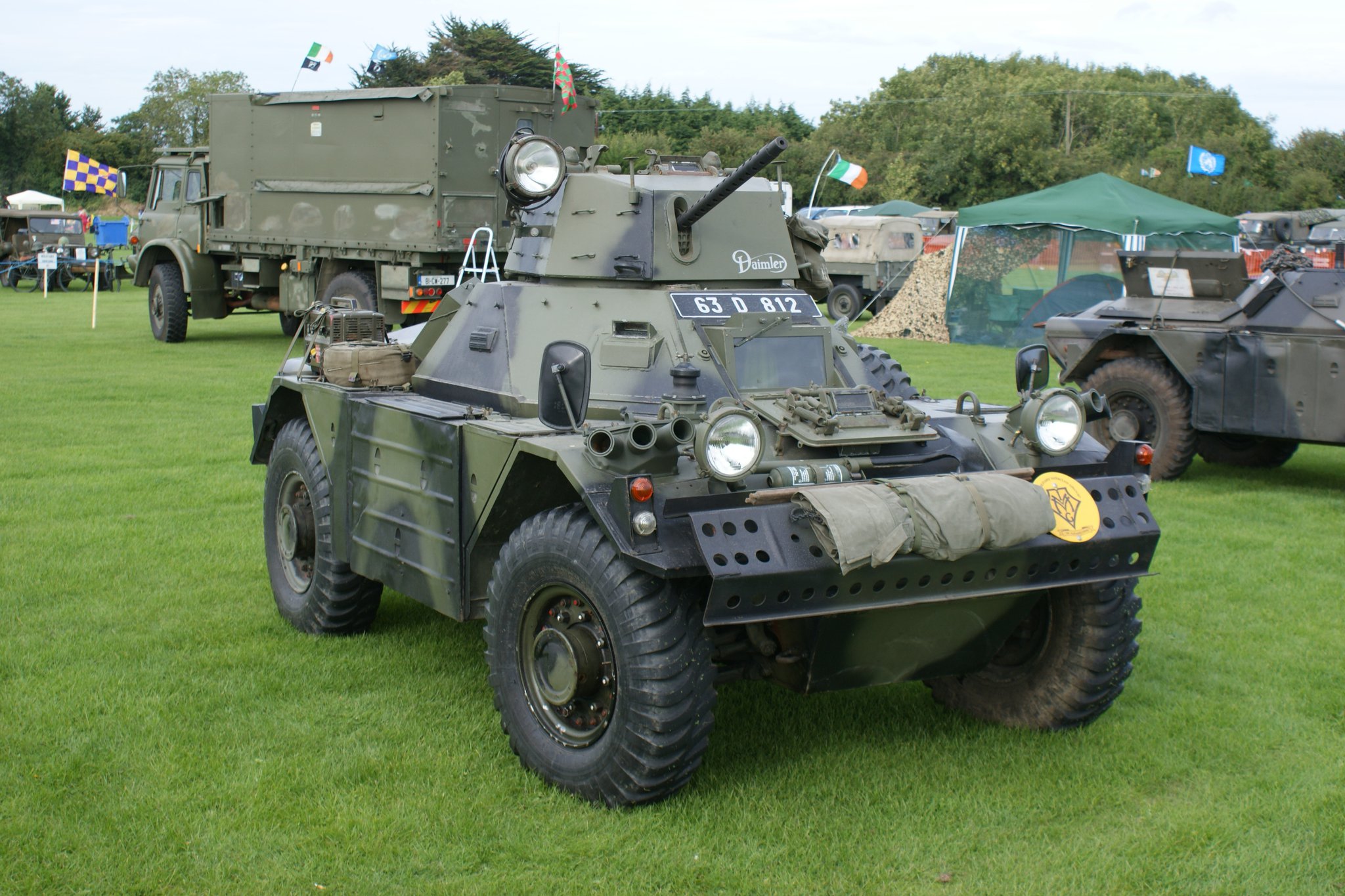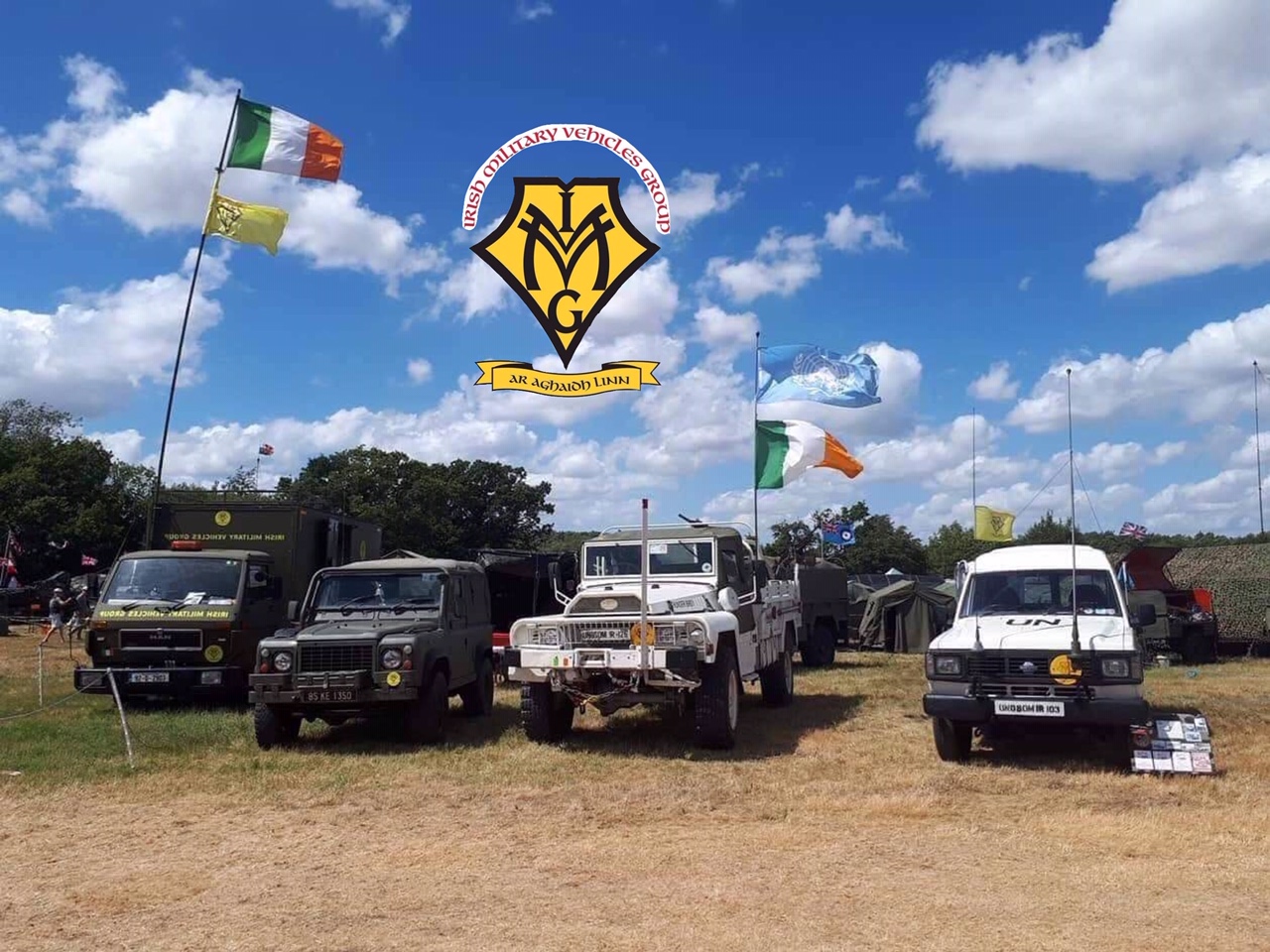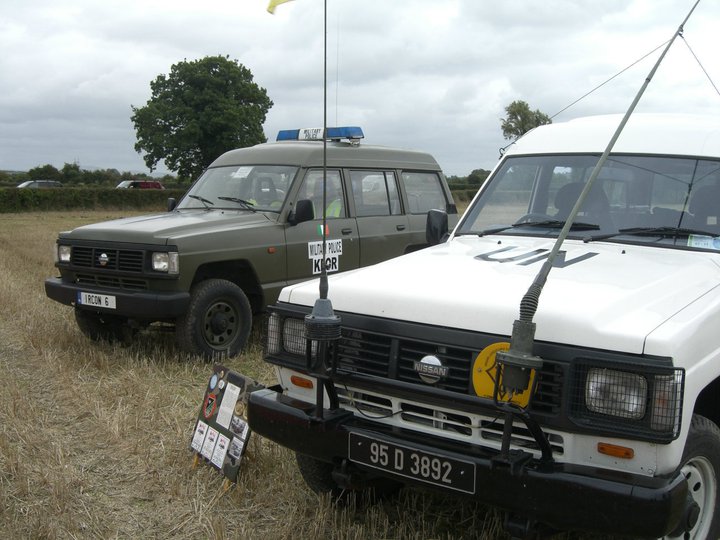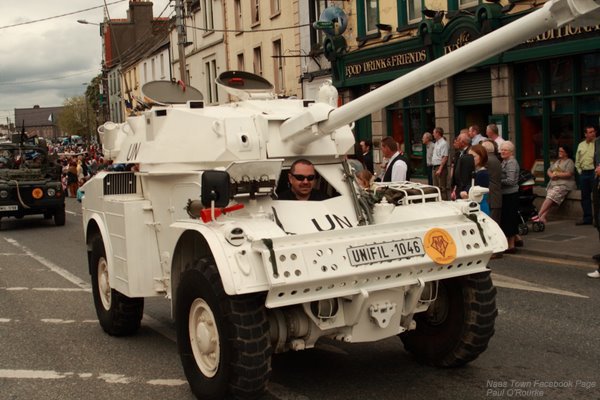Our Vehicles
Our Vehicles
IMVG club members own and maintain their own vehicles, and bring them to shows, displays and parades in Ireland and the UK. You can see examples our current and previous vehicles on this page.
Some of our Vehicles, Past and Present
Nissan Patrol 260 Series RD28
The origins of the Patrol go way back to the US Army Jeeps deployed in war-torn and defeated Japan. The Datsun Company began to manufacture a copy of the American utility vehicle, which became known as the Patrol and eventually evolved into the Nissan Patrol we know today. The 260 series was a long wheelbase, 4-door version of the 2-door 160 series, a vehicle common enough in Ireland following it's introduction in 1986.
As the Irish Army's fleet of General Service Land Rovers began to age, the Patrol was selected as its replacement and the first vehicles entered service in 1989. Soon, the only Land Rovers left were kept for ceremonial duties, and the green Nissans became a regular sight on Irish roads. The initial batch was supplemented by further deliveries in 1995 and 1997, and soon every unit was using them. Depending on role, many were specially fitted to take military radios, both HF and VHF, and in addition to regular duties as convoy escorts, some vehicles were used to tow 120mm Mortars, while the Air Corps employed the Patrol to inspect and maintain their runways and lighting.
The rarest Irish Army Nissan Patrols have to be the left-hand drive vehicles supplied to the Irish Military Police unit serving in Kosovo, and only one is known to have survived. However, other Irish Patrols served overseas in such places as Somalia and Liberia. As the vehicles aged, they began to be replaced with the next generation of Patrol - the GR - and now, 22 years after their introduction, the last handful of 260 series RD28's are finally making their way to the scrapyard.
The policy of scrapping these old vehicles means that there are very few survivors indeed, and what was for 2 decades a familiar sight to Irish soldiers is now a rare sight indeed. The white-painted Patrol now owned by a club-member and displayed as a vehicle deployed to Baidoa in Somalia was originally issued to a Cavalry unit, but there are no existing records to detail its military service.
Technical details:
Engine: 2.8 litre, 6-cylinder diesel
Gearbox: 5 forward, 1 reverse with high/low ranges, and selectable 4-wheel/2-wheel drive in high range.
Weight, empty: 2,020 kgs
Design gross vehicle weight: 2,800 kgs
Max braked towing capacity: 3,500 kgs
Panhard AML90
The Panhard AML (called the AML 245 by Panhard) 60/90 is a light armoured car with permanent 4×4 drive for mobility. It can carry either a 90mm quick-firing low-pressure gun as in the example above, or a 60mm breech-loading mortar as the primary weapon, although firing such a large gun from such a small vehicle requires care, particularly if planning to fire off the central axis.
During the 1950s, the French Army used the Daimler Ferret armoured car in large numbers but decided to build their own and Panhard started the production of the AML in 1960. Some 4,000 have been completed and manufacture continues for the export market.
Technical details:
Accommodation: Crew 3
Guns: Main Gun Caliber 90 mm
Dimensions: Height 2 m, Length 5.5 m, Width 2.1 m
Weights: Combat Weight 6,000 kg (13,228 lb)
Performance: Max Range 700 km (378 nm), Top Speed 25 mps (49 kt)
Power: Power 85 bhp
Other: Wheel Drive 4, Wheels 4
Bombardier Can-am
Introduced into the British Army in 1978 when a contract was placed with BSA (who were agents for Bombardier), to supply 2,000 machines. This was followed in 1980 by another contract for 800. The left hand kickstart and gear lever were a little strange to riders who had been used to British machines (where both were on the right).
The British bikes were fitted with a rear rack to carry panniers, which were originally made of glassfibre, but later changed to canvas bags. Rear view mirrors and flashing indicators were also fitted. The Can -Am was the forerunner of the modern generation of military motorcycles such as the Armstrong and now the Harley-Davidson, all designed for good cross-country performance but also suitable for road use. Fitted with 250cc 2 Stroke Engine.
Daimler FV701 Ferret
Initially built as a replacement for the war-time Dingo scout car and entering service in 1951, the Ferret was widely used by the British army during the Cold War and in fact some even saw action in the first Gulf War meaning the little armoured car survived 4 decades of active service! A common sight in the early days of The Troubles in Northern Ireland where it was nick-named "The Dalek" after the popular Dr. Who TV show, the Ferret was produced in different guises: with and without a turret, as a platform for a missile launcher and the last "Big Wheel" Ferrets were designed for use in deep water by the use of flotation screens due to the tactical requirement of being able to cross German rivers in the feared event of a Soviet invasion.
The Daimler Ferret owned by a club-member was built in 1959 and spent much of its life in Germany with BAOR ( the British Army of the Rhine) as a war-reserve vehicle, kept serviced and ready as preparation for the previously mentioned Soviet invasion that never came. Consequently, the vehicle is in very good condition with low mileage and still drives particularly well, its coil-sprung independent suspension allowing it to soak up the bumps of the roughest road surface. Although thirsty for fuel, it's compact size allows for storage in a domestic garage, making it a practical armoured military vehicle for the enthusiast, if any armoured car could ever be called practical!
The Irish connection with the Ferret is interesting. Back in the Congo in 1962, the UN provided 12 Ferrets to the Irish UN Contingent as all they had were the antiquated Ford armoured cars, and later in Cyprus, also on UN service, the Irish troops took over a small number of ex-British Army vehicles including Ferrets, Humber Pigs and Land Rovers. The French Army operated an amount of Ferrets too, but replaced them with the Panhard AML245 series of vehicles, also later purchased by the Irish Army.
Technical details:
Engine: Rolls-Royce B60, 130bhp 6-cylinder petrol
Gearbox: 4x4, 5-forward/5 - reverse with pre-selection
Weight: 3.7 tonnes
